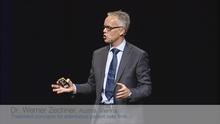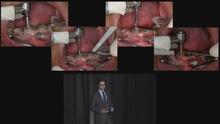-
0
Patient Assessment
- 0.1 Patient demand
- 0.2 Overarching considerations
- 0.3 Local history
- 0.4 Anatomical location
- 0.5 General patient history
-
0.6
Risk assessment & special high risk categories
- 5.1 Risk assessment & special high risk categories
- 5.2 age
- 5.3 Compliance
- 5.4 Smoking
- 5.5 Drug abuse
- 5.6 Recreational drugs and alcohol abuse
- 5.7 Parafunctions
- 5.8 Diabetes
- 5.9 Osteoporosis
- 5.10 Coagulation disorders and anticoagulant therapy
- 5.11 Steroids
- 5.12 Bisphosphonates
- 5.13 BRONJ / ARONJ
- 5.14 Radiotherapy
- 5.15 Risk factors
-
1
Diagnostics
-
1.1
Clinical Assessment
- 0.1 Lip line
- 0.2 Mouth opening
- 0.3 Vertical dimension
- 0.4 Maxillo-mandibular relationship
- 0.5 TMD
- 0.6 Existing prosthesis
- 0.7 Muco-gingival junction
- 0.8 Hyposalivation and Xerostomia
- 1.2 Clinical findings
-
1.3
Clinical diagnostic assessments
- 2.1 Microbiology
- 2.2 Salivary output
-
1.4
Diagnostic imaging
- 3.1 Imaging overview
- 3.2 Intraoral radiographs
- 3.3 Panoramic
- 3.4 CBCT
- 3.5 CT
- 1.5 Diagnostic prosthodontic guides
-
1.1
Clinical Assessment
-
2
Treatment Options
- 2.1 Mucosally-supported
-
2.2
Implant-retained/supported, general
- 1.1 Prosthodontic options overview
- 1.2 Number of implants maxilla and mandible
- 1.3 Time to function
- 1.4 Submerged or non-submerged
- 1.5 Soft tissue management
- 1.6 Hard tissue management, mandible
- 1.7 Hard tissue management, maxilla
- 1.8 Need for grafting
- 1.9 Healed vs fresh extraction socket
- 1.10 Digital treatment planning protocols
- 2.3 Implant prosthetics - removable
-
2.4
Implant prosthetics - fixed
- 2.5 Comprehensive treatment concepts
-
3
Treatment Procedures
-
3.1
Surgical
-
3.2
Removable prosthetics
-
3.3
Fixed prosthetics
-
3.1
Surgical
- 4 Aftercare
Digital treatment planning protocols, NobelClinician
Key points
- The digital workflow increases predictability of treatment procedures and results
- NobelClinician™ optimizes communication with the treatment team and the patient
- Treatment plan data are used to produce the surgical template for guided surgery
General considerations
The NobelClinician™ software solution is a digital tool for diagnostics, treatment planning, and patient communication. Patient scans are integrated into the software for identification, mapping, and diagnosis of anatomical structures. In a terminal dentition situation, the remaining teeth can be virtually extracted and the extraction sites are integrated into the planning. Based on this evaluation, taking both surgical and prosthetic requirements into account, optimal implant positions can be digitally planned. The data can be used for the fabrication of a guided surgical template.
Communication with the treatment team and patient
NobelClinician™ communication tools facilitate the presentation, explanation and discussion of the planned treatment with the patient and assist in increasing the patient's understanding and treatment acceptance.
During the planning phase, NobelClinician™ digital tools can be used to communicate with the treatment team, referrals and laboratory.
Digital workflow - main steps
1 Clinical diagnosis and treatment acceptance
Patient evaluation with CBCT or CT scans, intraoral diagnosis and clinical photos. Discussion with patient and treatment acceptance.
2 Digitizing the prosthetic information
Precise model scans including soft tissue information and scans of the diagnostic tooth set-up provided by the laboratory facilitate optimal treatment planning.
3 Treatment planning with team communication
Using the available digital information, the treatment plan is developed and shared with the treatment partners and, if required, outside expertise.
4 Production of the surgical template
If for precise implant placement a guided implant placement protocol is being used, the treatment plan data is used as well to produce the surgical template.
5 Implant placement (guided/non-guided)
With a guided surgery protocol there is the option to choose between guided pilot drilling only or a fully guided approach, including implant insertion.
6 Prosthetic design and restoration placement
In continuation of the digital workflow with NobelClinician™, NobelProcera™ CAD/CAM fabrication of the restoration offers design flexibility, precision, passive fit, high material quality, and reduced laboratory time.
Treatment examples using the NobelClinician™ digital workflow
1 Full-mouth rehabilitation following an immediate loading protocol
The patient presented with the wish for “additional support” for the existing prosthesis especially since his last teeth in the lower jaw front needed to be extracted. His prosthesis already showed multiple signs of wear and extensions. Thus, the prosthesis had to be renewed and could not be used after implant placement.
2 Rehabilitation of a fully edentulous maxilla/failing dentition
This patient presented with a telescopic prosthesis on teeth #15, 21, 22, 24. Due to the unfavorable prognosis of two remaining teeth and the need for the extraction of the other two teeth, a new treatment approach for the prosthetic rehabilitation of the upper jaw had to be chosen. The patient already felt comfortable wearing a removable denture for many years and therefore opted again for a new removable prosthesis. Furthermore, the financial situation of the patient did not allow for any augmentation procedure (sinus lift) in the posterior region, which would have allowed the placement of 8 implants for an implant-bridge. With respect to the patient’s expectations and his financial situation, extraction of all residual teeth and placement of 6 implants in the inter-antral region was chosen.
Medical condition: Churg–Strauss syndrome (CSS), Asthma






